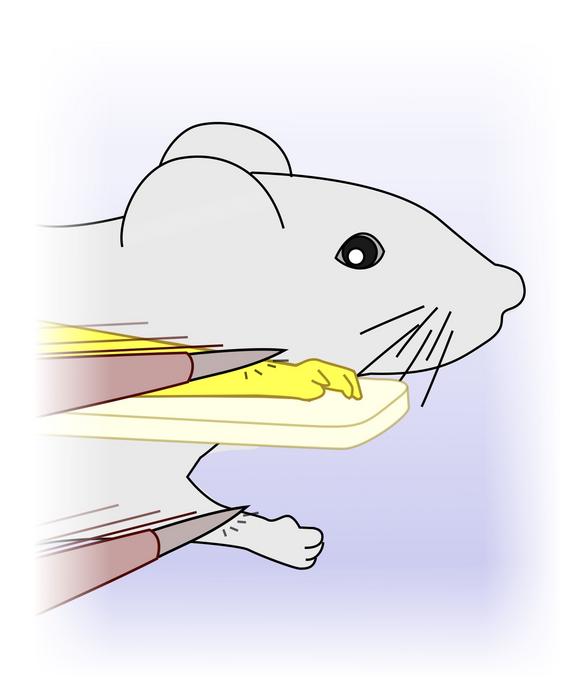Individuals with prosthetic limbs can eventually perceive their artificial limbs as extensions of themselves. A recent study has demonstrated that lab mice can also achieve this sense of “embodiment.” Researchers believe this discovery could lead to the development of improved prosthetics in the future.
According to senior author Luc Estebanez, a researcher focused on sensorimotor integration at the Université Paris-Saclay, this research provides tools for neurological engineering that may reveal new methods for controlling prostheses.
Everyone possesses a mental representation of their bodies, which aids in tracking movements, sensations, and interactions with the environment. Ideally, when someone loses a limb and receives a prosthetic, they should incorporate it into their mental representation, accepting it as part of their body. This process is known as “prosthetic embodiment.”
Nevertheless, many users of prosthetics struggle with achieving this embodiment. Certain psychological disorders, like schizophrenia and severe depression, can interfere with their mental representation of their bodies, leading to a lack of self-care and heightened risk of serious accidents.
The new study, released on June 5 in the journal PLOS Biology, introduces a model for examining limb embodiment in mice. This model may allow researchers to explore the neuroscience of embodiment more deeply and potentially develop advanced prosthetics for individuals who have lost limbs.
Related: ‘You can get the feeling that you are touching another human’: New prosthetic device detects temperature
Most existing research on prosthetic embodiment focuses on people and involves assessments like questionnaires and brain imaging. However, these methods restrict researchers from observing the detailed changes happening in the brain during embodiment.

“Embodiment is complex, involving neural, behavioral, and experiential aspects,” stated Tamar Makin, a cognitive neuroscience professor at the University of Cambridge, who did not take part in the study. “The subjective feeling of body ownership is crucial yet challenging to assess in non-verbal animals like mice,” she shared with Live Science.
While prosthetics are primarily focused on meeting human needs, this raises a gap concerning neurotechnology for mice, according to Estebanez. “Although we have the tools, robotics and related psychological tests have not yet been developed for this context.”
Estebanez and his team sought to determine if mice would display behaviors similar to humans in representing their bodies internally, which could pave the way for more precise studies on embodiment.
To investigate this, researchers employed the “rubber-hand illusion,” a classic psychology experiment where one arm is hidden while a rubber arm is placed nearby. During the experiment, both the real arm and rubber arm are brushed simultaneously, creating the illusion of feeling through the rubber arm. If a hammer is raised to strike the rubber arm, subjects often show a reflexive fear reaction, even though they are unharmed.
In the mouse study, a rubber paw replaced the hand. By observing the rodents’ pupil reactions, the researchers found that mice responded similarly to humans when their rubber paw faced the threat of an approaching arrow-like object. Essentially, the mice experienced the same illusion.
Interestingly, when the rubber paw was swapped out for a simple block, the mice did not exhibit the same response, mirroring findings from human studies. This indicates that the mice required not just visibility of the fake paw, but its resemblance to their own paw as well.
“To truly examine embodiment, we need to observe mice differently than we typically do,” Estebanez asserted. “The study’s implications suggest that mice possess a complex cognitive representation of their bodies, which is incredibly exciting.”
This research could also involve deeper biological inquiries into which brain areas are responsible for encoding embodiment, potentially aiding individuals with prosthetics or those with embodiment-related disorders.
The innovative model allows for targeted stimulation of mouse brains, enabling researchers to activate or deactivate specific brain cells in ways that are not feasible with human subjects. This approach could lead to improved brain-computer interfaces, linking brain activity to external devices, which may enhance neuroprosthetic design.
Makin, however, cautions against assuming this model will translate directly to neuroprosthetics research.
“I advise careful consideration before linking this to neuroprosthetics,” she warned. “The limb studied is passive, lacking voluntary control or sensory feedback. Most challenges associated with neuroprosthetic embodiment arise from the demands of control, which this model does not address.”
Estebanez replied that, in a different project, the team created a miniature prosthetic for mice that can be controlled via a brain-computer interface. “This is where things get interesting,” he remarked. “We aim to explore the level of embodiment achievable through motor control, and this mini-prosthesis has become an essential tool for neuroengineering in mice.”

